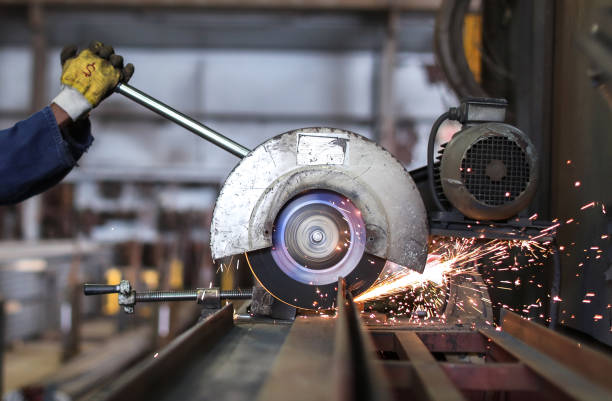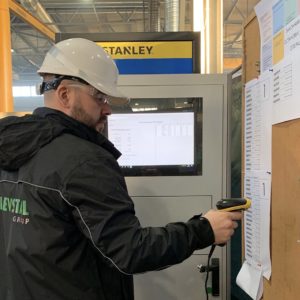Introduction
Metalworking is a multifunctional term that covers a wide range of operations and processes, but the basic objective of this process is to either shape or reshape a piece of metal. The result of this process could also vary greatly, ranging from various parts and objects to large structures and assemblies. There are also a plethora of different types and methods when it comes to metalworking, as well as many specific skill requirements and tool sets.
The range of products and objects that metalworking is capable of producing is quite staggering – this same industry produces bridges, buildings, and massive ships, and it’s also creating a lot of small engine parts and jewelry. This can be achieved using one of the four main groups or areas of metalworking – casting, joining, forming and cutting.
Most of the modern workshops that handle metalworking (or machine shops, as they’re often called) have a variety of machine tools that are used to create various metal-related products. These tools can be both general-use and highly specialized, depending on the object that is needed.
Additionally, it’s important to mention that some of the older types of metalworking are barely used anymore due to them being ineffective and not capable of being a good competition when it comes to mass producing. One such example is blacksmithing, which is a relatively old metalworking method that is now mostly used for the sake of historical reenactment. Blacksmithing is also sometimes used in less developed countries for some specific tasks, be it artisanal work or just a hobby.
Preparation stage
As we’ve mentioned before, there are three main groups of metal works that are widely known – joining, forming and cutting. Each of these categories involves quite a large list of different operations with their own unique characteristics or tools involved.
While it is true that the majority of metal works is performed using either carbide or steel tools used with a high speed or velocity, it’s also important to remember about the preparation stage before these processes. The majority of this process revolves around the marking out process, which is a process of transferring a project’s design on the actual metal piece so that you know what to cut.
This process can be performed either on a regular basis, if the objective of the metal works is not the mass-production, or just once at the start of a process – a lot of modern metal cutting appliances are used to create dozens of identical metal pieces in a short period of time with barely any input from a human, eliminating the need to mark up each and every metal piece before cutting it.
There’s also a specific tool that is often involved in this process, although it is mostly about the preparation stage – and that is a caliper. Calipers are measuring tools that value precision above everything else, which makes them perfect for various operations related to metal works. Most of the calipers are capable of having the accuracy down to one-thousandth of an inch, and measuring tapes are sometimes used as an alternative if there’s a need to measure larger objects with less precision.
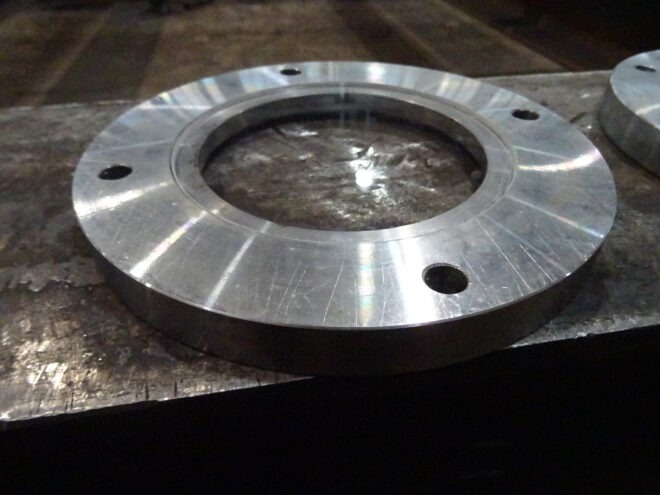
Now that we’ve gone over the preparation process for metalworking, it is time to talk about different approaches to metalworking – be it casting, joining, forming or cutting.
Casting
As one of the few processes that has been known for several thousand years already, casting is our first participant in this list. The main idea of casting implies a process of pouring liquid metal into a specifically constructed mold. The mold in question contains a 3-dimensional negative image of the intended shape, and the liquid metal is poured using a sprue – a hollow channel between the mold and the liquid metal storage.
The biggest use case for casting is to create complex shapes that would be either hard or more expensive to make with other metalworking methods. There are actually many types of casting, as well – we can start figuring them out by splitting casting methods into traditional and modern. There are three generally accepted traditional casting methods:
- Sand casting – one of the most popular casting methods, it is a very useful process that allows for lower costs and smaller operations, in general. It is also great for mass production, requires little to no maintenance and has barely any limits when it comes to part weight.
- Lost-wax casting – a process of creating a duplicate of the original object that serves as a mold. One of the more delicate and detailed processes of metalworking, lost-wax casting allows to generate objects with finer details and uses wax as the main material for a mold (although there are variations of this process that use different materials instead of wax – the so-called “lost mould casting”).
- Plaster mold casting – an approach that is somewhat similar to sand casting, uses plaster of paris as a mold material and is rather inexpensive. Its biggest downside is that it can only be used in combination with specific types of molten metal (non-ferrous materials with low melting point – copper, zinc, aluminum and magnesium).
As for the modern casting category, this one has a lot more variation than the traditional one. For example, there are two big subcategories to the modern category, and their biggest difference is the casting type – be it non-expendable or expendable.
It is worth noting that, while explained in a different category altogether, all three of the methods above (sand casting, etc.) are also included in this list since this categorization is more about the mold type and less about the method itself. As such, expendable casting methods can be separated as follows:
- Sand casting.
- Plaster mold casting.
- Investment casting (a modern variation of lost-wax casting).
- Evaporative-pattern casting – a class of casting on its own since the casting material evaporates during the pouring of the liquid metal, eliminating the need to remove the material from the object. Has two variations: full-mold casting and lost-foam casting.
- Loam molding – uses a mixture of clay and sand to generate mostly big and symmetrical objects (church bells, cannons, etc.).
- Shell molding – a variation of sand molding that uses the sand in form of a hardened “shell”, and not a flask with regular sand, offering more precision and being a great method for medium-sized objects with a high level of complexity.
- Waste molding of plaster – uses durable plaster as an intermediate, only useful for either stone carving or bronze casting.
The variation of operations for expendable casting is a great contrast to methods that reside in the non-expendable mold casting. As the name suggests, the main idea here is that the mold is not removed and does not have to be reformed after only one object is created using it. This category offers more consistency and easier repeatability, which is quite important when it comes to mass production. There are four main examples of non-expendable mold casting:
- Die casting – molten metal is forced into mold cavities under high pressure, mostly used for nonferrous materials and for either small or medium-sized objects.
- Centrifugal casting – as the name suggests, the molten metal here is poured into a mold that constantly rotates, and it’s a common method for smaller art pieces like jewelry.
- Permanent mold casting – uses permanent molds that are made from metal, and forces molten metal into molds using either gravity or vacuum/gas pressure.
- Semi-solid metal casting – uses a metal of different consistency (hence the name) with a modified die-casting machine, a common use case is for magnesium and aluminum alloys.
You can see here that casting alone has a lot of variations and use cases. However, we cannot also forget about completely different metalworking types, as well.
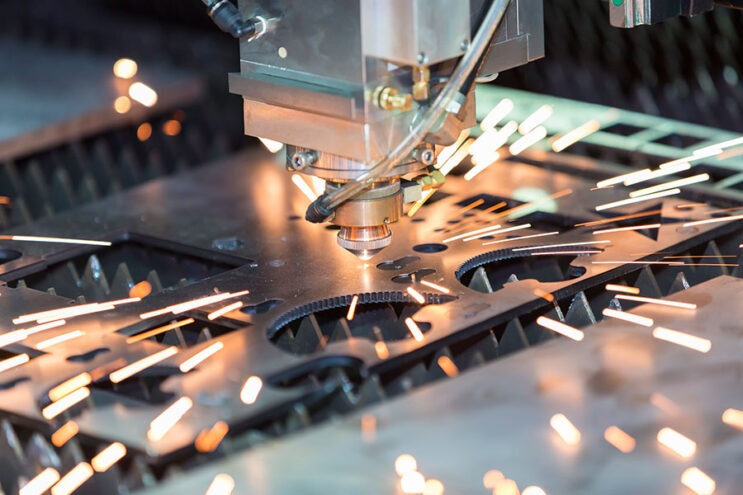
Joining
Joining is a category of metalworking methods that combine several different metal pieces into one with the use of high temperatures and other appliances. There are four main methods of joining as a process: brazing, soldering, welding and riveting.
Brazing is a process of joining several metal pieces together using a filler molten metal (over 450 degrees Celsius) that is put into a small space between two metal pieces put together (capillary). After that, the filler metal is supposed to interact with the two pieces, solidifying and forming a strong connection between these pieces in a process.
The main difference of brazing is that it does not have to melt the metal pieces themselves to create a connection, and brazed contraptions also have the advantage of being more flexible than anything done with, let’s say, welding. This is possible because the alloy between the metal pieces cannot precipitate or segregate after the brazing process.
There are several different variations that brazing as a process could have, including:
- Resistance brazing;
- Inductive brazing;
- Flame brazing;
- Diffusion brazing;
- Inductive brazing.
Soldering, on the other hand, is a process that is relatively similar to brazing but uses molten metal with a lower temperature (below 450 degrees Celsius). While this does result in a weaker connection, in general, the nature of soldering as a process allows it to be used in a much more precise way, such as with circuit boards.
Welding is probably the most popular joining method of the four, offering the ability to join metal pieces via the coalescence process. The baseline of this process is that parts of both metal pieces are melted and connected to each other in this state, with the addition of a filler material to form a “pool” of sorts at the connection place.
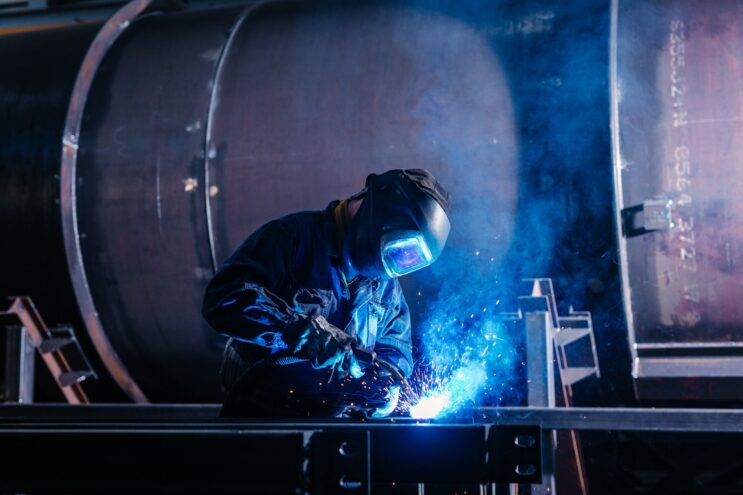
It’s also not uncommon for two melted pieces to just be pressed to each other to create a connection, without a filler material whatsoever. The main variation of welding comes from a source of energy that is used to melt the material in question – be it an electric beam, a gas flame, an electric arc, or even something less obvious, like ultrasound or a simple friction. It is an extremely versatile, but also a very dangerous process on its own.
Riveting is the last joining operation type on this list, and probably the oldest one out of the four, too. A rivet is a type of a bolt that is supposed to hold two metal pieces together, by drilling or punching holes through both metal parts and passing a rivet through those holes.
As soon as the rivet connects two metal pieces, it is possible to form permanent heads of a rivet as a bolt by using either forming dies or hammers. To separate the two pieces, you’ll have to cut off one of the permanent bolt heads from a rivet and use force to get the rivet out of the hole it was forced into.
Before we’ll move towards a new category of metalworking, it is important to mention that you can find additional information about the topic of welding, as well as about many other similar processes in our article about metal fabrication.
Forming
Forming is a fundamentally different approach to custom metal works, since it does not require removing parts of the material to create the desired shape or object. As with other groups of operations, forming also has its own categories – two of them, to be exact. The main difference between the two lies in the way the metal pieces are deformed:
Sheet forming processes are applying mechanical pressure to the metal at room temperature. This is quite a blanket term, since it also covers various tube forming processes, as well as bending, coining, punching, and a number of other sheet metal works that still serve the original purpose of forming as a process – to create a metal part without getting too much scrap.
Some other examples of operations that lie under the umbrella of sheet metal works include decambering, roll forming, shearing, raising, hydroforming, stamping, hot metal gas forming, and more.
Bulk forming processes are using the combination of pressure and heat to bend metal pieces. While some of the sheet forming processes also use heat as a part of a process, it’s safe to say that pretty much every variation of a bulk forming process uses some form of heat to make the metal piece in question more susceptible to deformation without breaking or cracking.
Some of the more known variations of bulk forming processes are extrusion, forging, rolling, cold sizing, friction drilling, burnishing, drawing and powder metallurgy.
Cutting
Finishing up our list of custom metal works, we have cutting as a generalized process. Cutting is the process of removing excess material from a metal piece to achieve the necessary result in some way. Out of the major four groups of operations with metal, this one leaves the most excess material – everything that gets cut out of the original metal piece is often treated as scrap and not used anywhere else.
There are several major categories of cutting that can be segregated, and a number of separated processes that don’t fall into any of the categories. First of all, there’s machining, which is a process, or a combination of processes, that are often used in chip producing – a good example of that is drilling. Another group of processes can be segregated under the term of burning, which is a process of using some sort of torch to separate one piece of steel into several smaller ones (more often than not used on sheet metal plates).

When it comes to processes that don’t fall under any of the categories above, it’s easy to bring up something like chemical milling – a process of removing excessive metal from a metal piece using a combination of chemicals in a specific way.
We can also separate different cutting methods by the general process of removing the metal parts. For example:
- Using shear, saw, snips or a chisel are all good examples of manual cutting technologies.
- The usage of electric discharge or a water jet are both representations of the erosion cutting technologies.
- Anything that is connected to heavy machinery would be qualified as machine technologies, including sawing, milling, turning, grinding and drilling.
- Photochemical machining is pretty much the only example of chemical cutting technologies in action.
- The last, but not the least, type of cutting technology is focused on either burning or welding – be it with oxy-fuel burning, using a laser or a plasma.
On the topic of cutting operations, you can learn more information about one specific type of cutting process in our article on plasma cutting.
Conclusion
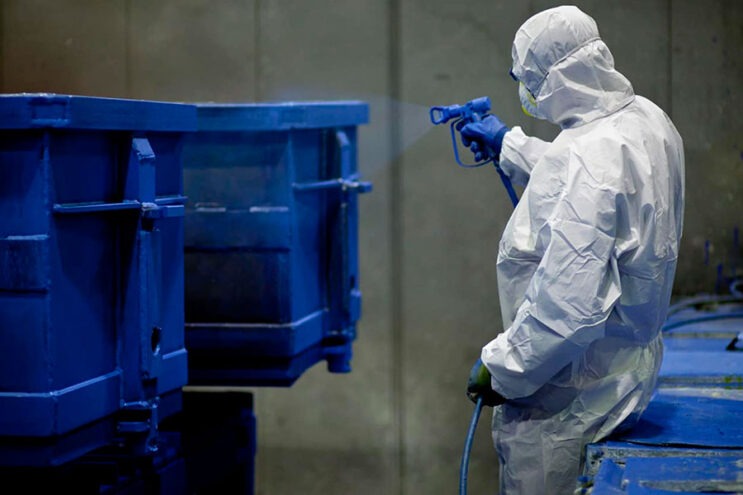
It’s safe to say that metalworking as a topic is fairly complicated, to say the least. There are many different types of operations that could be done with metal, and a massive number of objects that can be created using those processes. We hope that this article was successful in explaining the most notable points of each and every custom metal works type – from casting and forming to joining and cutting.



